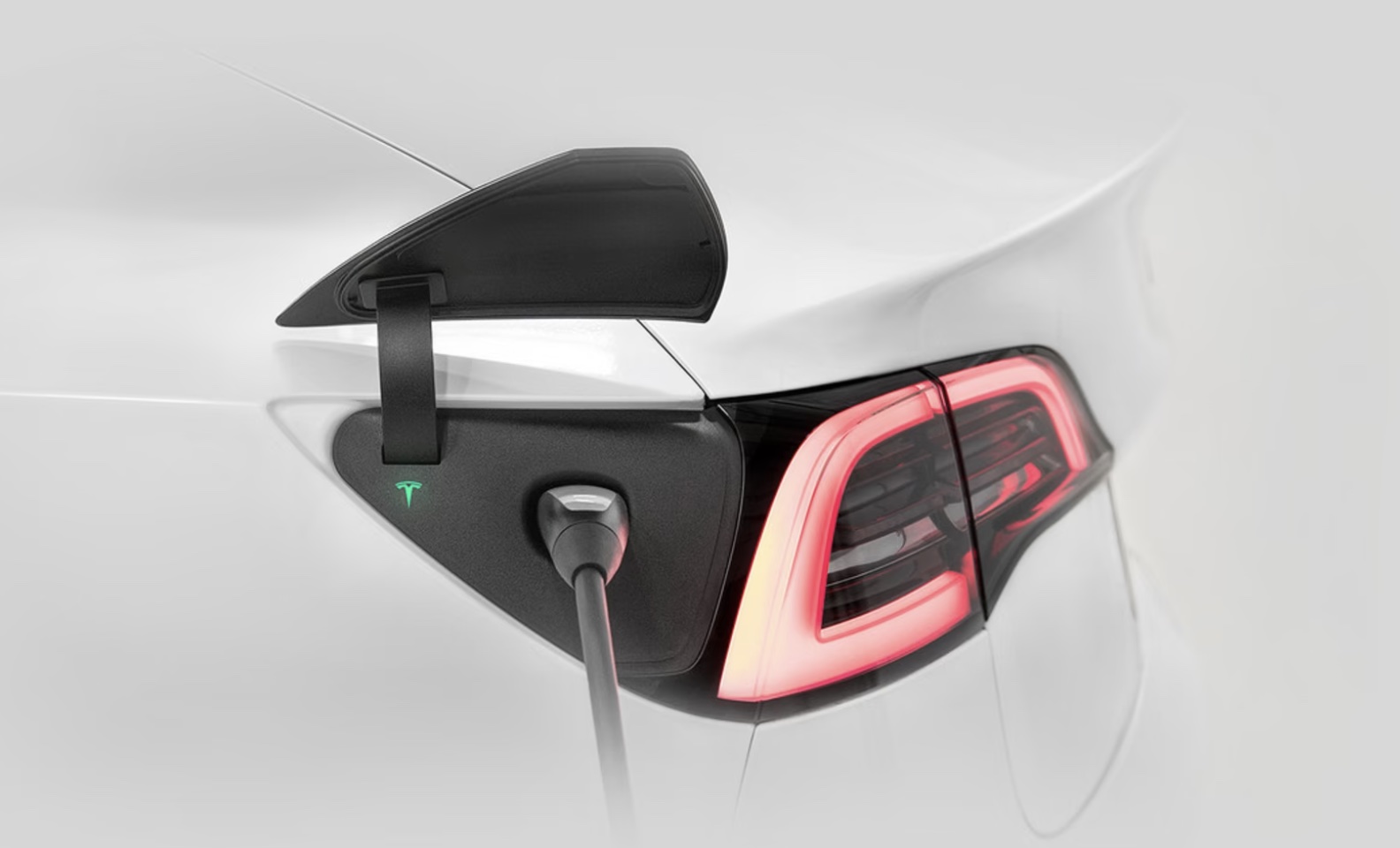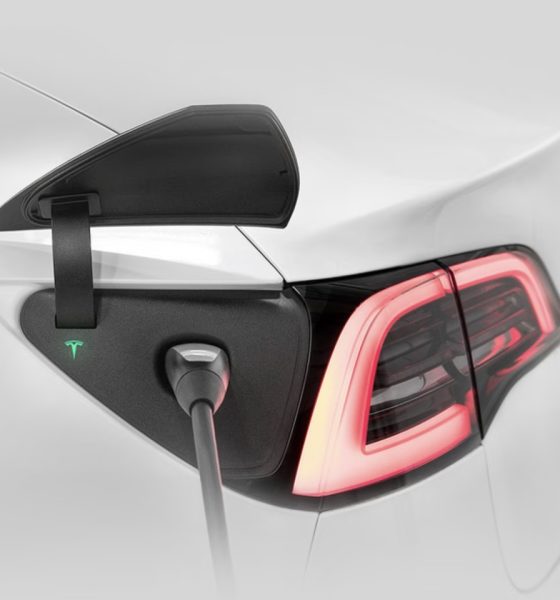

News
GM’s Tesla NACS support spells trouble for Electrify America [Opinion]
General Motors’ (GM) support for Tesla’s North American Charging Standard (NACS) might be trouble for Electrify America. With two out of three of the United States’ top legacy automakers supporting Tesla’s NACS, Electrify America’s position in the EV charging space is precarious at best.
A previous Teslarati article theorized that Ford’s adoption of Tesla’s NACS could change the electric vehicle (EV) charging landscape, specifically in the United States and the rest of North America. The theory is gaining some legs now that General Motors has decided to support the NACS.
Tesla has explained why NACS is an ideal charging standard. First, NACS is half the size and twice as powerful compared to CCS. Second, NACS is used in the Tesla Supercharger Network, which has more than 45,000 Supercharger stalls and over 40,000 wall connectors worldwide. In comparison, Electrify America has 3,503 fast chargers and 116 Level 2 chargers in the United States.

Based on user reviews and comments, Electrify America offers a vastly different experience than Tesla Supercharger stations. Some of the criticisms include chargers that constantly break down. There have also been reports of billing failures and other instances where customers found paying at Electrify America stations challenging. The user experience at Electrify America seems cumbersome, making CCS-reliant EV ownership difficult.
The rise of Tesla NACS
In 2022, Tesla emphasized its intention to make the NACS charging connector and charge port the standard in North America as opposed to the conventional Combined Charging System (CCS) connector. Electrify America uses CCS connectors and charging ports.
Support from Ford and GM are steps in the right direction for Tesla’s NACS goal. General Motors and Ford hold a significant market share of the United States auto industry. Statista data from the first half of 2022 showed that General Motors had a 16% market share, while Ford held a 13.4% market share in the United States. While those market share numbers reflect fossil fuel and new energy vehicle sales, they are a good benchmark for the future.
Along with the rest of the world, the United States is starting to embrace battery electric vehicles (BEVs). The Inflation Reduction Act alone has already influenced automakers with businesses in North America to invest in BEV production and battery cell development. Global policies, market, and investor trends all point to BEVs as a mainstay in the global auto industry.

BEV Charging Infrastructure
Building an infrastructure to support BEV adoption is essential to the transition. Tesla knew the critical role charging stations would play as electric vehicles gained popularity.
While the rest of the world still questioned the viability of battery electric vehicles, the question of a universal charging system was also up in the air. However, CCS charging grew popular, resulting in charging networks like Electrify America. Most non-Tesla charging stations support CCS charging because most automakers design their BEVs for it. For instance, Europe decided long ago that CCS would be the standard charging connector for its battery-electric vehicles. With two premier automakers supporting Tesla NACS, though, CCS may lose its hold in North America.
The Teslarati team would appreciate hearing from you. If you have any tips, contact me at maria@teslarati.com or via Twitter @Writer_01001101.

News
Tesla FSD fleet is nearing 7 billion total miles, including 2.5 billion city miles
As can be seen on Tesla’s official FSD webpage, vehicles equipped with the system have now navigated over 6.99 billion miles.

Tesla’s Full Self-Driving (Supervised) fleet is closing in on almost 7 billion total miles driven, as per data posted by the company on its official FSD webpage.
These figures hint at the massive scale of data fueling Tesla’s rapid FSD improvements, which have been quite notable as of late.
FSD mileage milestones
As can be seen on Tesla’s official FSD webpage, vehicles equipped with the system have now navigated over 6.99 billion miles. Tesla owner and avid FSD tester Whole Mars Catalog also shared a screenshot indicating that from the nearly 7 billion miles traveled by the FSD fleet, more than 2.5 billion miles were driven inside cities.
City miles are particularly valuable for complex urban scenarios like unprotected turns, pedestrian interactions, and traffic lights. This is also the difference-maker for FSD, as only complex solutions, such as Waymo’s self-driving taxis, operate similarly on inner-city streets. And even then, incidents such as the San Francisco blackouts have proven challenging for sensor-rich vehicles like Waymos.
Tesla’s data edge
Tesla has a number of advantages in the autonomous vehicle sector, one of which is the size of its fleet and the number of vehicles training FSD on real-world roads. Tesla’s nearly 7 billion FSD miles then allow the company to roll out updates that make its vehicles behave like they are being driven by experienced drivers, even if they are operating on their own.
So notable are Tesla’s improvements to FSD that NVIDIA Director of Robotics Jim Fan, after experiencing FSD v14, noted that the system is the first AI that passes what he described as a “Physical Turing Test.”
“Despite knowing exactly how robot learning works, I still find it magical watching the steering wheel turn by itself. First it feels surreal, next it becomes routine. Then, like the smartphone, taking it away actively hurts. This is how humanity gets rewired and glued to god-like technologies,” Fan wrote in a post on X.
News
Tesla starts showing how FSD will change lives in Europe
Local officials tested the system on narrow country roads and were impressed by FSD’s smooth, human-like driving, with some calling the service a game-changer for everyday life in areas that are far from urban centers.

Tesla has launched Europe’s first public shuttle service using Full Self-Driving (Supervised) in the rural Eifelkreis Bitburg-Prüm region of Germany, demonstrating how the technology can restore independence and mobility for people who struggle with limited transport options.
Local officials tested the system on narrow country roads and were impressed by FSD’s smooth, human-like driving, with some calling the service a game-changer for everyday life in areas that are far from urban centers.
Officials see real impact on rural residents
Arzfeld Mayor Johannes Kuhl and District Administrator Andreas Kruppert personally tested the Tesla shuttle service. This allowed them to see just how well FSD navigated winding lanes and rural roads confidently. Kruppert said, “Autonomous driving sounds like science fiction to many, but we simply see here that it works totally well in rural regions too.” Kuhl, for his part, also noted that FSD “feels like a very experienced driver.”
The pilot complements the area’s “Citizen Bus” program, which provides on-demand rides for elderly residents who can no longer drive themselves. Tesla Europe shared a video of a demonstration of the service, highlighting how FSD gives people their freedom back, even in places where public transport is not as prevalent.
What the Ministry for Economic Affairs and Transport says
Rhineland-Palatinate’s Minister Daniela Schmitt supported the project, praising the collaboration that made this “first of its kind in Europe” possible. As per the ministry, the rural rollout for the service shows FSD’s potential beyond major cities, and it delivers tangible benefits like grocery runs, doctor visits, and social connections for isolated residents.
“Reliable and flexible mobility is especially vital in rural areas. With the launch of a shuttle service using self-driving vehicles (FSD supervised) by Tesla in the Eifelkreis Bitburg-Prüm, an innovative pilot project is now getting underway that complements local community bus services. It is the first project of its kind in Europe.
“The result is a real gain for rural mobility: greater accessibility, more flexibility and tangible benefits for everyday life. A strong signal for innovation, cooperation and future-oriented mobility beyond urban centers,” the ministry wrote in a LinkedIn post.
News
Tesla China quietly posts Robotaxi-related job listing
Tesla China is currently seeking a Low Voltage Electrical Engineer to work on circuit board design for the company’s autonomous vehicles.

Tesla has posted a new job listing in Shanghai explicitly tied to its Robotaxi program, fueling speculation that the company is preparing to launch its dedicated autonomous ride-hailing service in China.
As noted in the listing, Tesla China is currently seeking a Low Voltage Electrical Engineer to work on circuit board design for the company’s autonomous vehicles.
Robotaxi-specific role
The listing, which was shared on social media platform X by industry watcher @tslaming, suggested that Tesla China is looking to fill the role urgently. The job listing itself specifically mentions that the person hired for the role will be working on the Low Voltage Hardware team, which would design the circuit boards that would serve as the nervous system of the Robotaxi.
Key tasks for the role, as indicated in the job listing, include collaboration with PCB layout, firmware, mechanical, program management, and validation teams, among other responsibilities. The role is based in Shanghai.
China Robotaxi launch
China represents a massive potential market for robotaxis, with its dense urban centers and supportive policies in select cities. Tesla has limited permission to roll out FSD in the country, though despite this, its vehicles have been hailed as among the best in the market when it comes to autonomous features. So far, at least, it appears that China supports Tesla’s FSD and Robotaxi rollout.
This was hinted at in November, when Tesla brought the Cybercab to the 8th China International Import Expo (CIIE) in Shanghai, marking the first time that the autonomous two-seater was brought to the Asia-Pacific region. The vehicle, despite not having a release date in China, received a significant amount of interest among the event’s attendees.








